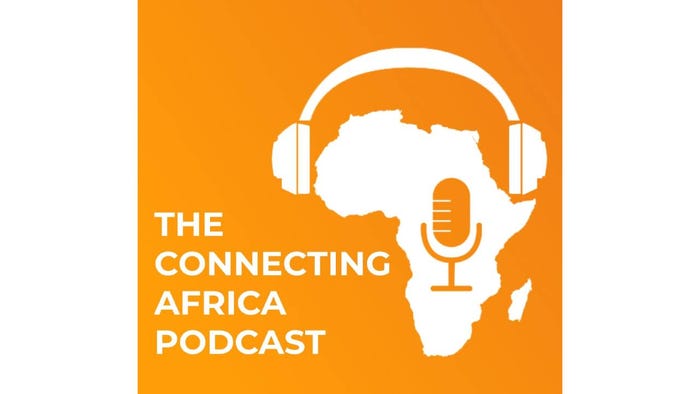How Poa Internet is unlocking meaningful connectivity in East AfricaHow Poa Internet is unlocking meaningful connectivity in East Africa
Poa Internet's CEO Andy Halsall shares his views on what it takes to develop last-mile connectivity and get Africans online in a meaningful way.

Poa Internet is an innovative community enterprise, providing fast, affordable, unlimited Internet to low-income and rural communities in Kenya.
Working with local people from the communities where it operates, Poa facilitates home broadband and a network of Wi-Fi hotspots. At the time of the interview, they were operating in approximately 40 communities in and around Nairobi.
Ahead of the virtual East Africa Com Emily Parrett sat down with Poa Internet's CEO, Andy Halsall, to hear about its mission and what it takes to develop last-mile connectivity – specifically the hurdles that must be overcome.
Emily Parrett (EP): Please could you tell us about your background?
Andy Halsall (AH): I was involved in setting up some of the first GSM mobile phone networks in Europe, then studied for an MBA at London Business School. My career has been a combination of the operational and investment side of technology and telecoms.
I spent some time with McKinsey, as well as Orange, running their strategic investment arm. I founded an investment advisory firm focused on emerging markets telecoms and also worked for a business called Fon. We grew Fon into the world's largest Wi-Fi network.
The starting point for Poa Internet was one of the key learnings from Fon: You can now build huge telecom networks using Wi-Fi-type technologies but at a fraction of the cost of the traditional approaches.
EP: What problems are you trying to solve, and what is the proposed solution?
AH: In large portions of the planet, Internet penetration is low. It's a global problem present in South America, Asia, even rural parts of the USA.
Internet use is the lowest in Africa and we focus on solving the problem there. However, it's about more than just getting people online as even those who are connected don't use the Internet very much.
People who have access to the Internet have many opportunities, yet the few Kenyans that are online only use an average of 200 megabytes of data a month – the equivalent of about 20 minutes of YouTube.
The reasons for getting people online are very wide. The Internet in itself is just bits and bytes but it's an enormous enabler and the impact it creates is huge. Unfortunately, there's a growing digital divide; those without connectivity are missing out on a huge number of opportunities and are being marginalized.
Our goal is to get people online in a meaningful way. Everyone should have the opportunity to engage with the full richness of the Internet. They should be able to afford to consume hundreds of gigabytes of data.
EP: Poa Internet provides affordable connectivity to the communities you work in. What are you proud of?
AH: Connectivity has a clear positive impact on education. During the pandemic, children have been educated from home. We've provided free home Internet to some of the schools we work with, so those students can continue their lessons from home.
We've also seen a whole new type of business appearing. We have a customer in one of the low-income areas we operate in who edits wedding videos. These videos are sent to him from the US. He edits them using digital skills he's taught himself and sends them to the US. Moving HD videos around would be impossible without good, affordable connectivity. So that's a whole new type of global entrepreneurship appearing as a result of our work.
EP: That's brilliant. To ask one of the big questions in telecommunications, why is last-mile connectivity so important?
AH: The last mile is the thing that drives up the cost of the Internet. In the urban areas where we operate, people can get 4G and 3G, but the price is so high because of the huge costs of building and operating these networks.
Our customers consume hundreds of gigabytes a month. This would cost hundreds of dollars on a 4G network, for families living on just a couple of hundred dollars a month this would be totally unaffordable.
Globally there are huge amounts of infrastructure and there's been an increasing amount appearing in Africa. Companies such as Facebook and Google have been building fiber around the continent, so Africa is becoming increasingly connected to the rest of the world. This means you can get data from the US to Kenya for just a few cents.
However, by the time that data gets delivered to the end customer the price has become dollars. That end delivery piece is called the last mile. The cost of building the final link to the end customer is very high.
The high cost of the last mile is a global problem, but the problem is compounded in Africa. The lack of existing infrastructure – ducts, poles, power etc. – means it costs more to build the last mile than in emerged economies. You end up with this double whammy of it costing more for people who have less.
So, we focus on delivering that last mile piece as cost-effectively as possible. That's the bit that will change how much the customer has to pay for the Internet.
EP: If it costs more, how do you make the Internet affordable?
AH: There's no one single way of solving this problem. In areas often referred to as urban slums, there are huge numbers of people in a chaotic environment. Whereas if you're in a rural community, you have a different set of problems to solve because the customers are spread out and the environment is often wooded or mountainous.
To get around this we mix together many technologies, depending on the environment. We largely buy our equipment, radios and cables and such from outside the continent, but most our team comes from the areas where we deliver our connectivity. Joining together these technologies seamlessly and combining it with this highly local delivery is where we've created a lot of innovation.
What we're really doing is creating little ISPs for each community. Being so local creates jobs, which is great for these communities but is super-efficient and makes our services much more affordable.
EP: So what's next for Poa Internet?
AH: We're seeing a lot of demand for our services, but there are still lots of people we haven't yet reached. Our plan is to expand into other parts of Nairobi, then other cities across Kenya, and eventually into other countries across Africa.
EP: Are you partnering with anybody for that?
AH: Certainly. The Internet isn't one company, it requires many organizations to work together. We do our part in the last mile, but we're part of a bigger the ecosystem and work closely with companies like Google and Liquid Telecom. We also have a network of local partners in the communities where we operate.
EP: You'll be talking about connectivity at the virtual East Africa Com. What are you looking forward to at the event?
AH: It's a strong networking opportunity. It's a good way to build relationships, get to know who else is in the space, understand what else is happening. Networking becomes harder when there's less physical connection, so East Africa Com provides opportunities to share.
— Andy Halsall will be speaking at the virtual East Africa Com taking place on May 11-12, 2021. He will be joining a panel to discuss "Connecting the Dots – East Africa's last-mile connectivity challenge."
Click here to register for free.
*Top image source: iStock.
.jpg?width=100&auto=webp&quality=80&disable=upscale)
.jpg?width=400&auto=webp&quality=80&disable=upscale)
_(1)_(1).jpg?width=700&auto=webp&quality=80&disable=upscale)
.jpg?width=700&auto=webp&quality=80&disable=upscale)
_(1).jpg?width=700&auto=webp&quality=80&disable=upscale)

.jpg?width=700&auto=webp&quality=80&disable=upscale)
.jpg?width=700&auto=webp&quality=80&disable=upscale)
_(1).jpg?width=700&auto=webp&quality=80&disable=upscale)
.jpg?width=700&auto=webp&quality=80&disable=upscale)

.jpg?width=700&auto=webp&quality=80&disable=upscale)